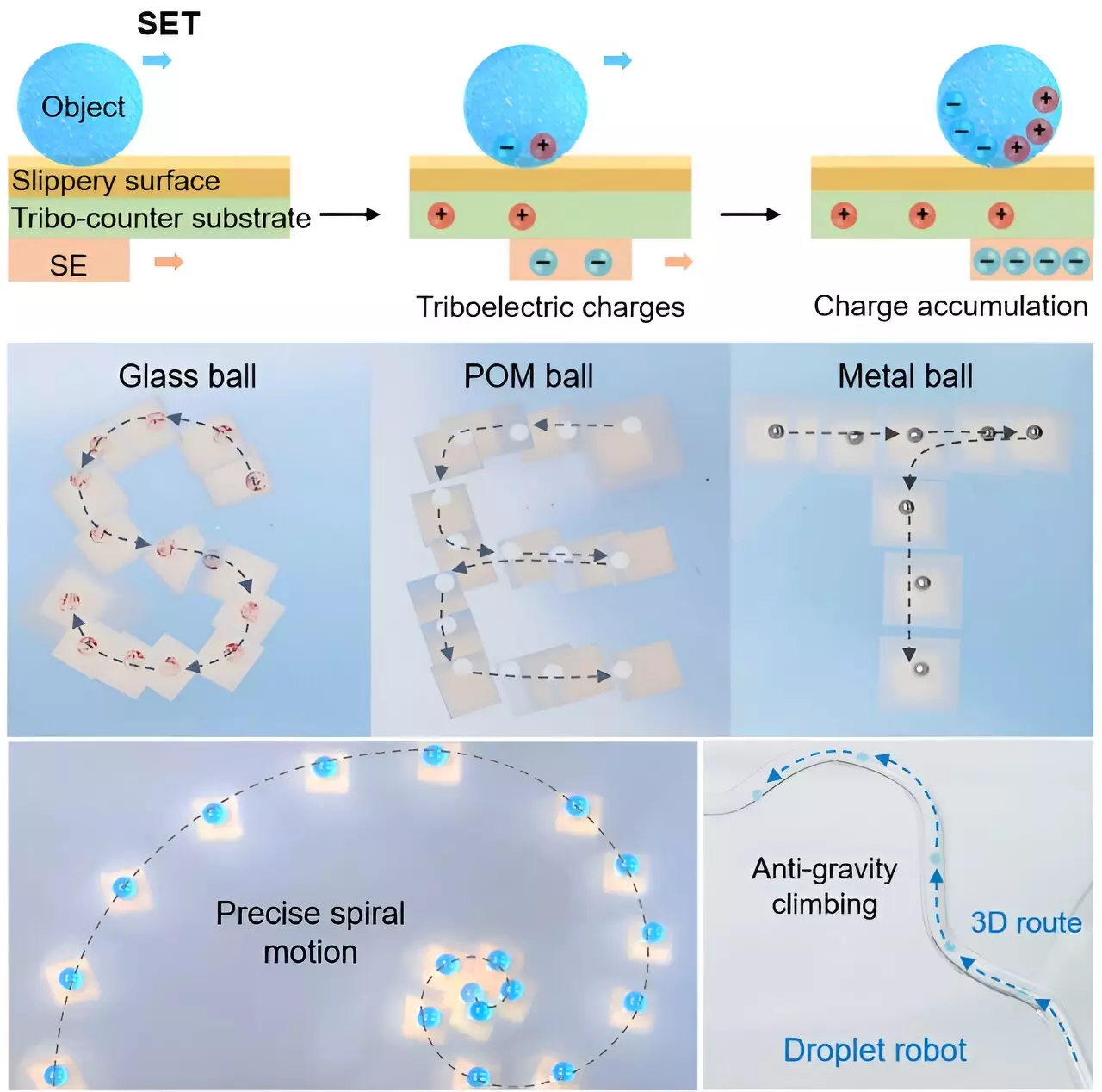Recent advancements in the field of material science have delivered a groundbreaking tool: the self-powered electrostatic tweezer (SET). This innovative device, spearheaded by Dr. Du Xuemin and his team from the Shenzhen Institute of Advanced Technology, offers a leap forward in manipulating a variety of materials with unparalleled precision. Unlike traditional tweezers, which often rely on cumbersome electrode configurations and external power sources, the SET showcases an ingenious utilization of the triboelectric effect, enabling it to generate ample triboelectric charges autonomously.
With a focus on practicality, the design of the SET is a game changer in numerous scientific fields, including physics, chemistry, and biology. The incorporation of polyvinylidene fluoride trifluoroethylene (P(VDF-TrFE)) in the electrode showcases a superior ability to accumulate charges rapidly—achieving surface charge densities as high as ~40 nC cm-2 in mere seconds. This feature not only allows for faster manipulation but also eliminates some of the complexities involved with conventional electromechanical devices.
Performance and Adaptability: A Game Changer
The performance capabilities of this new tweezer are particularly noteworthy. Researchers have observed that the device can maintain stability in its charge generation even after extensive use—specifically, it retains performance after an astounding 1,000 sliding cycles without degradation. Moreover, the charge density remains remarkably stable for over five hours, proving its reliability in varied environments, including conditions with up to 50% relative humidity.
One of the most impressive aspects of the SET is its versatility in manipulating different object states, ranging from liquid droplets to solid spheres. Its operational speed of 353 mm/s highlights its potential not only in scientific applications but also in innovative manufacturing processes and advanced robotics. This ability to adapt to various object types and surfaces—broadening its application range to include droplet splitting and microfluidics—positions the SET as a versatile tool for investigators and engineers alike.
Eliminating Barriers: The Future of Non-Conventional Manipulation
The technical merits of the self-powered electrostatic tweezers signify a potential paradigm shift in object manipulation technology. By removing the necessity for complex electrode arrays and external power sources, the SET addresses longstanding challenges faced by researchers and engineers. Furthermore, this clever engineering reduces the risks associated with heat production during operation—a common drawback of older models which can compromise sensitive materials.
As the scientific community begins to explore the enormous potential of the SET, possibilities appear boundless. Applications can extend beyond traditional laboratory settings; the potential applications range from droplet-based robotics to advanced microfluidic systems. The unique design and electric properties of the SET are likely to foster new methodologies in material handling, setting the stage for future innovations that could have far-reaching implications across multiple disciplines.
The self-powered electrostatic tweezer is not merely a successful novelty. Instead, it can be considered a major stepping stone toward reimagining how we engage with materials at micro and nano scales, aligning with the trend of developing more efficient and adaptable tools in the ever-evolving landscape of science and technology.

